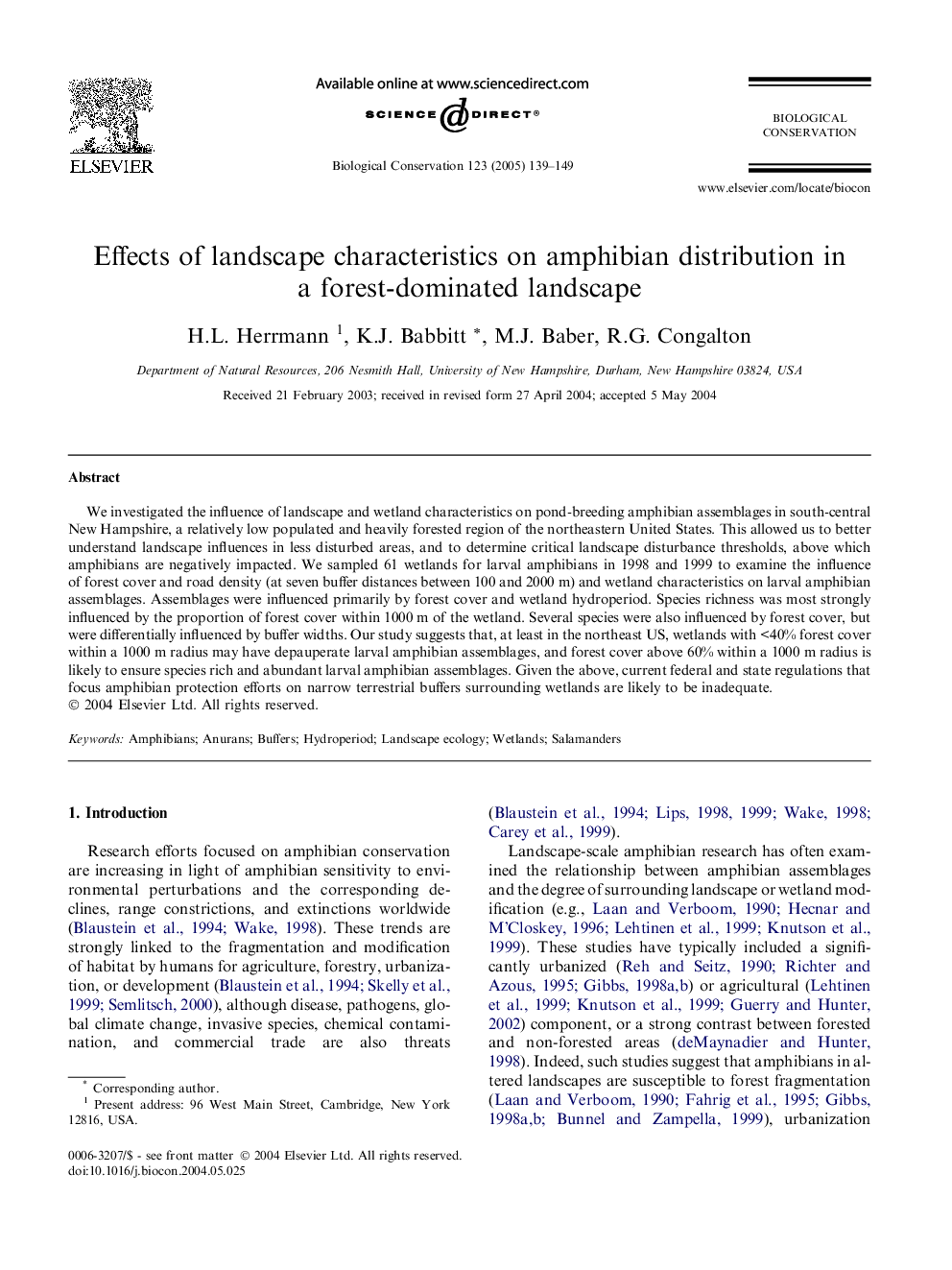| Article ID | Journal | Published Year | Pages | File Type |
|---|---|---|---|---|
| 9446196 | Biological Conservation | 2005 | 11 Pages |
Abstract
We investigated the influence of landscape and wetland characteristics on pond-breeding amphibian assemblages in south-central New Hampshire, a relatively low populated and heavily forested region of the northeastern United States. This allowed us to better understand landscape influences in less disturbed areas, and to determine critical landscape disturbance thresholds, above which amphibians are negatively impacted. We sampled 61 wetlands for larval amphibians in 1998 and 1999 to examine the influence of forest cover and road density (at seven buffer distances between 100 and 2000 m) and wetland characteristics on larval amphibian assemblages. Assemblages were influenced primarily by forest cover and wetland hydroperiod. Species richness was most strongly influenced by the proportion of forest cover within 1000 m of the wetland. Several species were also influenced by forest cover, but were differentially influenced by buffer widths. Our study suggests that, at least in the northeast US, wetlands with <40% forest cover within a 1000 m radius may have depauperate larval amphibian assemblages, and forest cover above 60% within a 1000 m radius is likely to ensure species rich and abundant larval amphibian assemblages. Given the above, current federal and state regulations that focus amphibian protection efforts on narrow terrestrial buffers surrounding wetlands are likely to be inadequate.
Related Topics
Life Sciences
Agricultural and Biological Sciences
Ecology, Evolution, Behavior and Systematics
Authors
H.L. Herrmann, K.J. Babbitt, M.J. Baber, R.G. Congalton,
